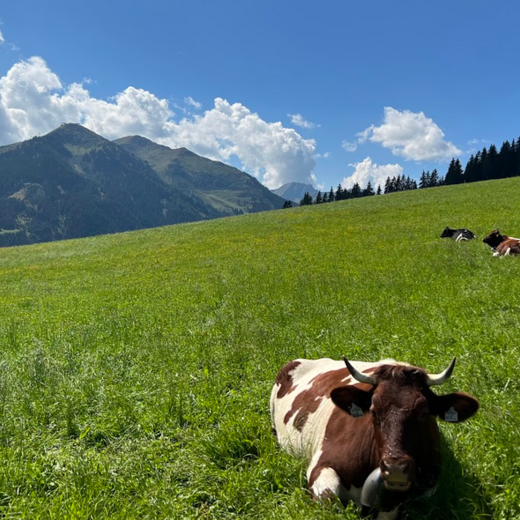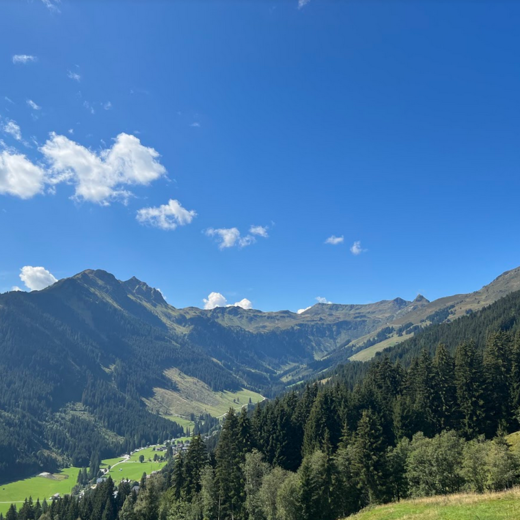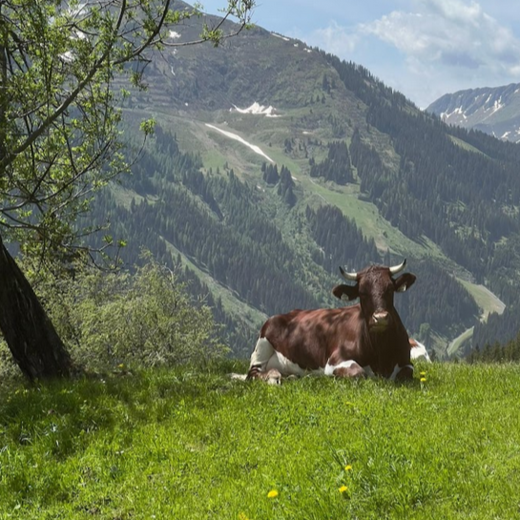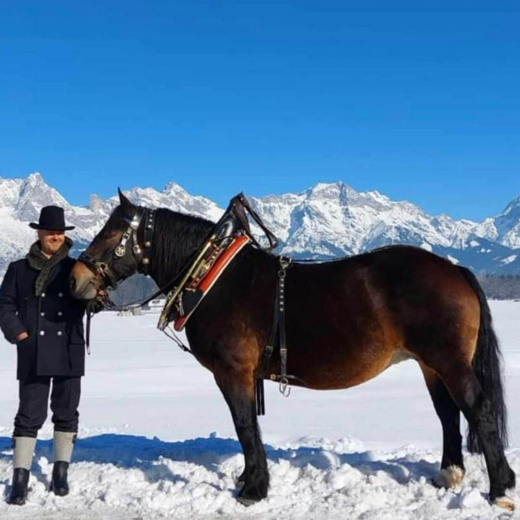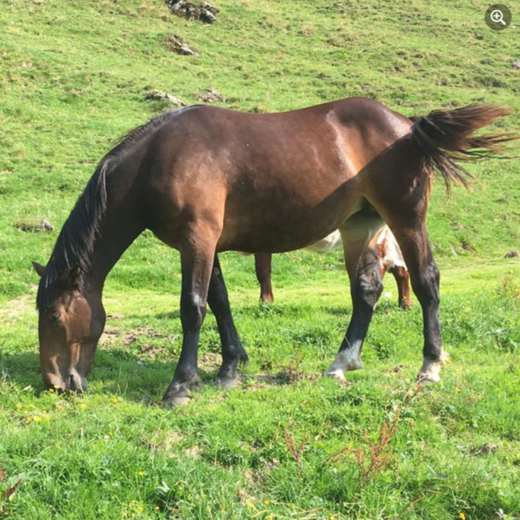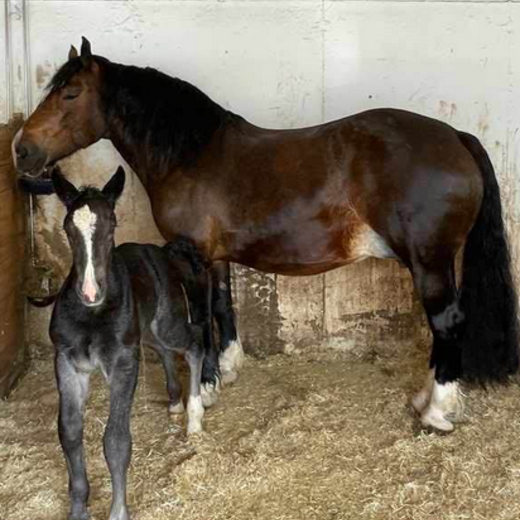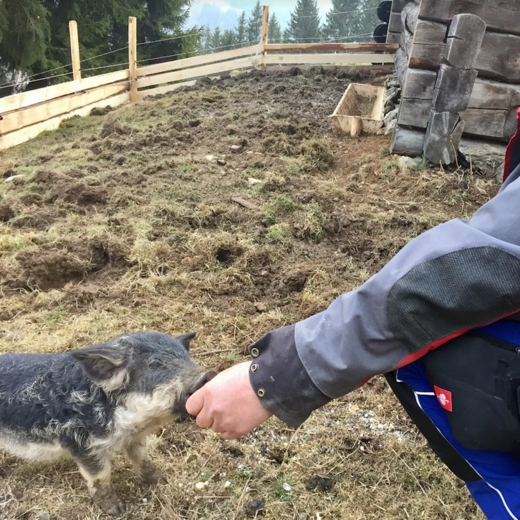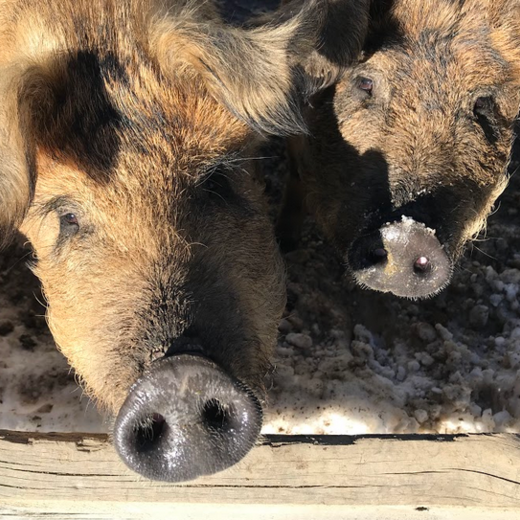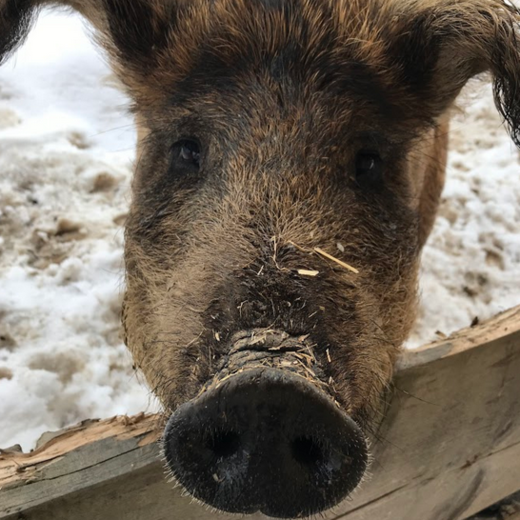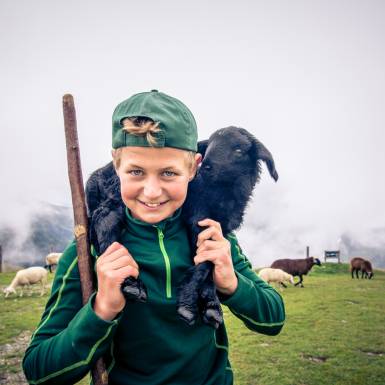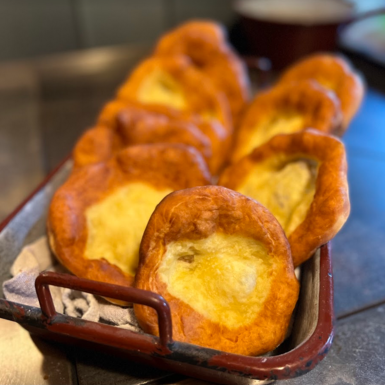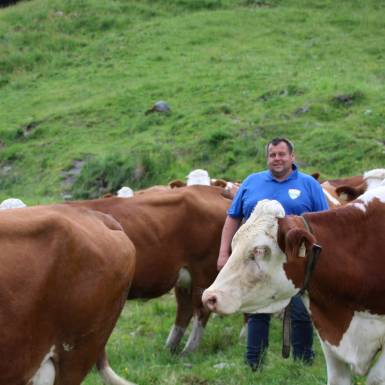- The laid-back 3
- Traditions
The Laid-Back 3: Old and special Animal Breeds in the Glemmtal Valley
Like in many alpine regions, the climate in the Glemmtal Valley is demanding, the landscape steep and exposed and the soil comparatively poor. This special set of circumstances has lead generations of farmers to be very selective and careful in choosing which livestock was best suited to keep in these harsh conditions. Over generations, a select few pioneers were successful in breeding animals that were better adapted to the unique conditions, and which were therefore able to grow to a sizeable population. Today’s story is about three old and unique breeds of livestock which are now (again) an increasingly common sight throughout the valley.
The Classic: The Pinzgauer Rind (Pinzgauer Cow)
The reason that these beautiful chestnut-brown and white cows can be called a classic breed is down to hundreds of years of targeted breeding under the most difficult of conditions. This breed is considered to be especially hardy and resilient and is perfectly adapted to mountainous environments thanks to its toughness and sure-footedness. As the name already gives away, this breed originates from the Pinzgau region, but it can now be found in over 30 countries across the globe including pastures as far as South Africa. Today, like in days past, Pinzgauer Cows are mostly being held as dual-use livestock as they deliver both milk and meat of the highest quality.
Pinzgauer Cow Facts:
Pinzgauer Cows held in Austria: ca. 37.300 (2020)
Average milk production: 5.9 kg of milk
Color: Chestnut-brown base color, withers stripe on the back; back of the legs, stomach, underbelly, utter and tail are white
Weight of a cow: 600-700 kg
Weight of a bull: 1.000 – 1.100 kg
Fun fact: The rarer black-and-white colored variant of the Pinzgauer Cow was historically considered to be a lucky animal.
Noriker – popular cold-blood mountain horse
The origins of the Noriker breed of horses go back to ancient times. People like the Romans and Kelts were known to breed hardy breeds that resembled the modern Noriker. The Noriker breed mostly like stems from crossbreeding Roman and local Austrian work horses in the Keltic Kingdom of Noricum which mostly consisted of the lands of what is now modern Austria. They rose to prominence due to their toughness, longevity, sure-footedness, strong character and their efficient use of food.
Noriker are mainly bred in chestnut, dark brown as well as black colors but there are white and leopard-colored variants as well. Up until the age of mechanization these horses were indispensable in agriculture, forestry and – especially in the steep Glemmtal Valley – as draft- and carthorses carrying wood, harvests, hay and people alike. Even to this day, the Noriker remains a popular breed working closely with humans and pulling carts. Just like the Pinzgauer Cow, this cold-blood mountain horse is also often referred to as “Pinzgauer”.
Norika facts:
Height (wither): about 165 cm
Weight of a Norika stallion: 800 kg
Physique: muscular, strong legs and wide chest
Historic use: pack- and carthorse especially in agriculture and forestry
Modern use: packhorse, forestry and leisure
Mangalitza Wooly Pig
The Mangalitza pig was the most important breed of pig before and throughout the Habsburg dynasty until it nearly completely vanished from Austria around 120 years ago. It’s still a very popular breed in Hungary, though, and it’s now slowly making a comeback in Austria. Also called woolly pig, Mangulac, sheep-pig or Bogauern, this breed of pig is very tough and can be kept outdoors in lower temperatures thanks to its thick wooly coat. Modern breeds that can be fattened much quicker have all but replaced the wooly pig as livestock nowadays and the continuous race for efficiency and low prices have made it increasingly difficult to cultivate such a comparatively slow-growing breed.
The Mangalitza are good-natured, very tough and sturdy and are growing in popularity due to the special composition and taste of their meat. The color-variants that survived to the modern day are the white-bellied, blond and red Mangalitza. The black, white, brown and speckled variants are considered extinct.
Those who choose to keep the Mangalitza as livestock know that this breed of pig needs to be kept different than the common domestic pig. They prefer the outdoors and need to be kept for at least two years before their meat reaches its optimal quality.
The Glemmtal Valley is characterized by small farms and agricultural businesses who move their livestock to high mountain pastures in summer – so, during you next hike, it’s worth keeping an eye out as you might spot some of these old and rare breeds.
Have fun exploring!

